Lenovo Yoga 2: A decent budget hybrid [Review]
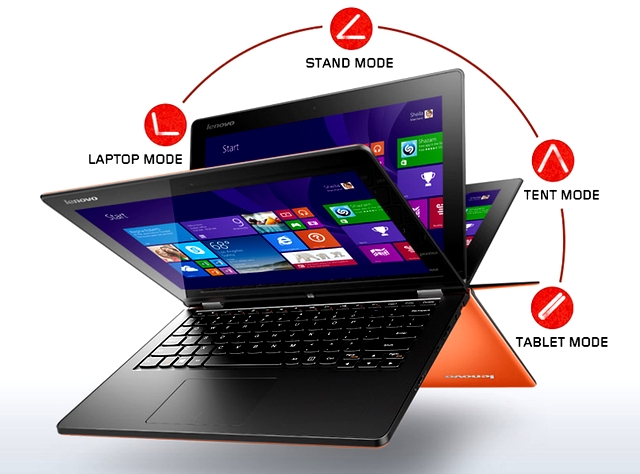
The Lenovo Yoga 2 is not to be confused with the Yoga 2 Pro. Although the basic principle of a notebook with a screen that flips over to turn the device into tablet is the same, the specification is markedly different. Just for starters, this is an 11.6in device rather than 13.3in -- but what's inside is much more value-oriented as well.
Instead of a processor from Intel's Core range, our Yoga 2 sample came with a Pentium N3520. This is part of Intel's Silvermount microarchitecture generation, in particular the Bay Trail-M family, which means it's actually from the same line as the Atom processor, despite the Pentium brand name. The N3520 has a nominal frequency of 2.166GHz, but a single core can rise to 2.42GHz in Turbo mode.
This is a true quad-core processor, too, rather than using Hyper-Threading to double the core count -- the four cores are all physical rather than virtual. Despite these features, the processor still manages to draw just 7.5W, putting it lower than even the Y-class Intel Core CPUs.
The processor also provides 3D acceleration within this same power budget, in the shape of Intel HD Graphics running at 854MHz. However, although this chipset is from the same generation as Ivy Bridge (Intel HD Graphics 4000), and will therefore support DirectX 11, it only offers four execution units, so won't be particularly potent for tasks needing capable 3D hardware support.
Lenovo has also only partnered the Pentium N3520 with 4GB of 1,333MHz DR3 SDRAM, but given the budget orientation of the Yoga 2 this is a little more forgivable than with recent higher-end Ultrabooks we have tested. Storage capacity isn't so miserly, with a 500GB Seagate Laptop Ultrathin hard disk supplied.
This won't give you the performance or power consumption benefits of a solid state disk, but at least it will provide plenty of space and keep the cost down.
So, with the exception of the reasonably sized hard disk, the specification is decidedly low-end. However, the primary selling point for the Yoga 2 is its ability to flex itself into multiple positions. It functions perfectly well as a regular 11in Ultrabook, with a standard Chiclet-style keyboard.
The action is a little shallow, but it's still perfectly comfortable to type on for extended periods. The trackpad is sensibly placed almost directly beneath the spacebar, and although it's not a particularly large example, it's accurate and pleasant to use, with integrated buttons indicated via a line at the bottom.
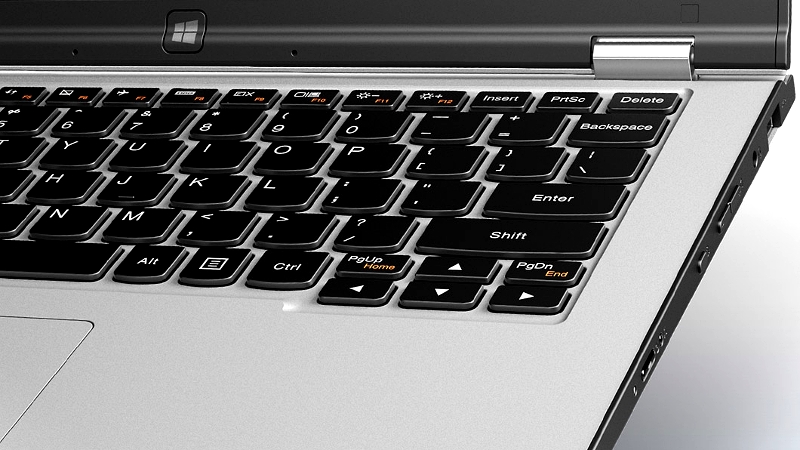
The other input device is, naturally, the touchscreen. This is always available, but once you rotate the screen past a certain point the keyboard and trackpad are disabled automatically, turning the device into a touchscreen with a stand, or a full tablet. The 11.6in screen only offers the standard 1,366 x 768 resolution that is the usual baseline for this size. However, it is an IPS display so has noticeably better viewing angles than some Ultrabook screens, although this is marred somewhat by the glossy finish that picks up reflections considerably in bright conditions.
Strangely, the Yoga 2 weighs marginally more than the 13.3in Yoga 2 Pro, but at 1.45kg it's still not exactly going to pull your shoulder off if carried around in a bag all day. This is not a weight you would want to carry in one hand as a tablet for extended periods, however, being about twice as heavy as an iPad. It will be fine for browsing information on the couch, but not ideal for reading a novel whilst standing on a train.
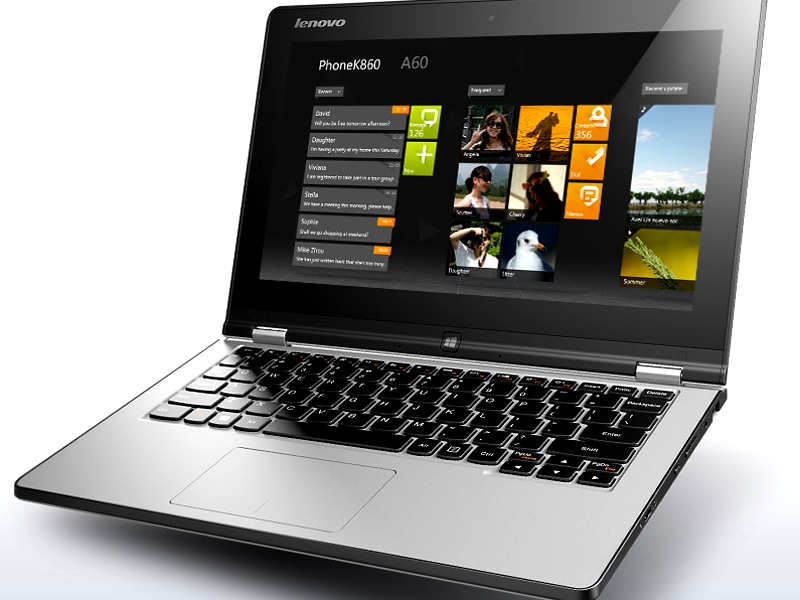
The 11.6in chassis and tablet pretensions haven't left much space for expansion. On the left, next to the power socket, is a single USB 3.0 port plus the SD card reader and a Micro HDMI port. The right is home to just a single USB 2.0 port and the combined headphone and microphone minijack. The rest of the space is taken up by the power button, volume control and screen auto-rotate button. There's no wired Ethernet or VGA, although neither will be particularly important for the target market. There's 802.11b/g/n Wi-Fi on hand and Bluetooth 4.0 for wireless connectivity, but no support for the latest 802.11ac standard and no mobile data option.
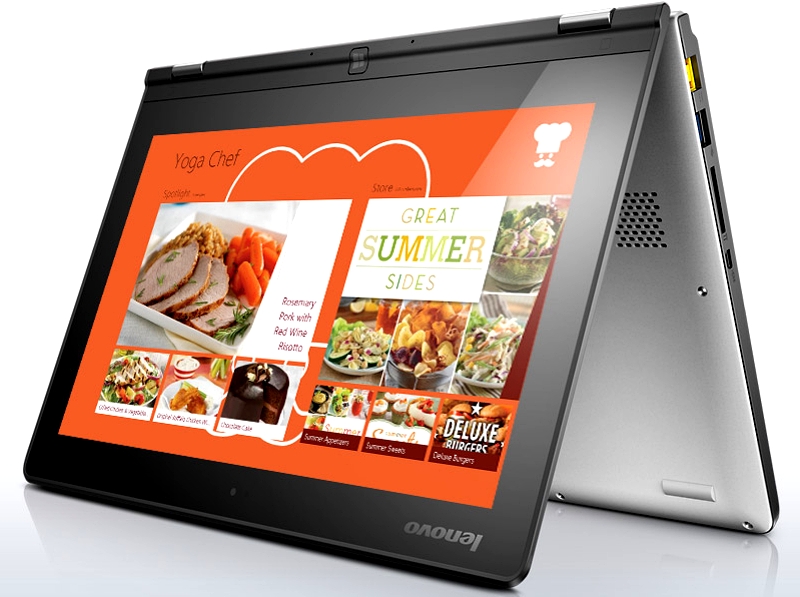
Systems based on the Intel Atom have never set the world alight in terms of performance, but this latest Pentium-branded update at least gets within shouting distance of the Intel Core line. The rendering scores in Maxon Cinebench R11.5 and R15 of 1.67 and 141 respectively are not far off some Core-based Ultrabooks we have tested, and significantly ahead of any Atom-based systems we have previously reviewed. The OpenGL result of 7.51 in Cinebench R11.5 isn't particularly impressive, but earlier Atoms wouldn't even run this test.
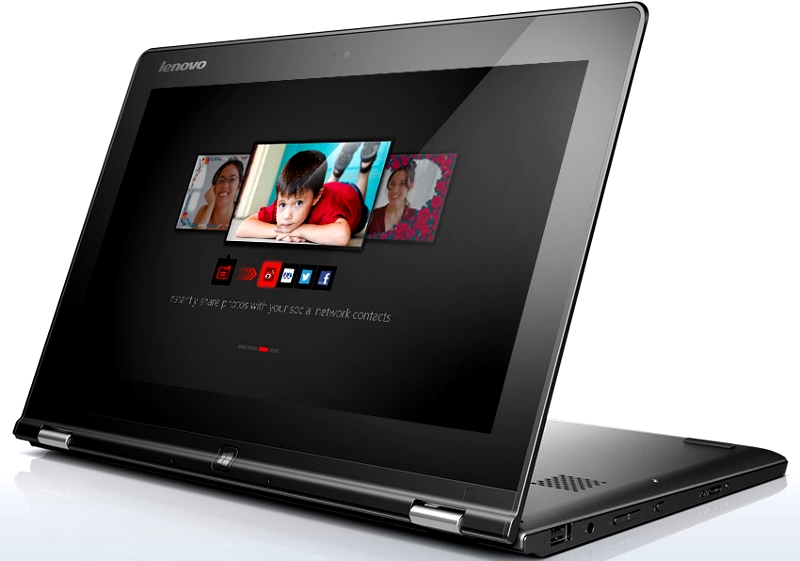
The Futuremark 3DMark11 result of 267 is also very low, but at least the Yoga 2 completed the test, where earlier Atoms and Intel Core processors with HD Graphics 3000 wouldn't. However, the Yoga 2 wouldn't finish the Firestrike 1.1 portion of 3DMark. This clearly isn't a system you will be doing any significant gaming on.
Application performance with Futuremark's PCMark 8 is not particularly impressive either. The score of 1192 in the Home test and 883 in the Work test are the lowest we have seen. Although we have only been running this test since the beginning of the year, so don't have any results with earlier Atom-based processors, the Work test in particular shows the deficiencies of the Atom's architecture compared to Core.
A system so focused on portability wouldn't be very persuasive if it didn't have a decent battery life. Fortunately, the Yoga 2 doesn't disappoint in this area. It lasted 322 minutes of the PCMark 8 Home test in Power Save mode, which is good if not outstanding. That places it behind the Lenovo ThinkPad Yoga, but ahead of the Yoga 2 Pro, though do note that the performance score dropped to a somewhat miserable 684. It also managed a very commendable 239 minutes of the intensive Battery Eater Pro test. So this notebook should just about last a full working day if your activities are not too intensive.

Verdict
The Lenovo Yoga 2 is very much a lesser beast than its Pro sibling -- but fortunately so is the price. Coming in at a penny under $489, it costs a similar amount to a premium tablet.
In the form we reviewed, as a much more pleasant to use and flexible alternative to a netbook, it has a lot going for it. Performance is much better than the netbooks we tested a few years ago, and you might actually use the tablet functionality when sitting on a train or in your lounge. This is a decent budget hybrid, although performance is still modest, particularly where graphics are concerned.
Good Points
- Very keenly priced
- Decent battery life
- Better performance than a netbook
- Usable fold-over tablet mode
Bad Points
- Heavy for one-handed tablet usage
- Poor 3D graphics abilities
Specifications
| Manufacturer and Model | Lenovo Yoga 2 |
| Processor | 2.166GHz Intel Pentium N3520 |
| RAM | 4GB 1333MHz DDR3 SDRAM |
| Graphics | Intel HD Graphics |
| Storage | 500GB Seagate Laptop Ultrathin hard disk |
| Optical disc | None |
| Display | 11.6in IPS touchscreen with 1,366 x 768 pixels |
| Networking | 802.11b/g/n Wi-Fi, Bluetooth 4.0 |
| Interfaces | 1 x USB 3.0, 1 x USB 2.0, Micro HDMI, combo headphone / microphone, SD card reader. |
| Width x Depth x Height | 298 x 206.5 x 17.2mm |
| Weight | 1.45kg |
| Warranty | 1 years RTB warranty |
Published under license from ITProPortal.com, a Net Communities Ltd Publication. All rights reserved.